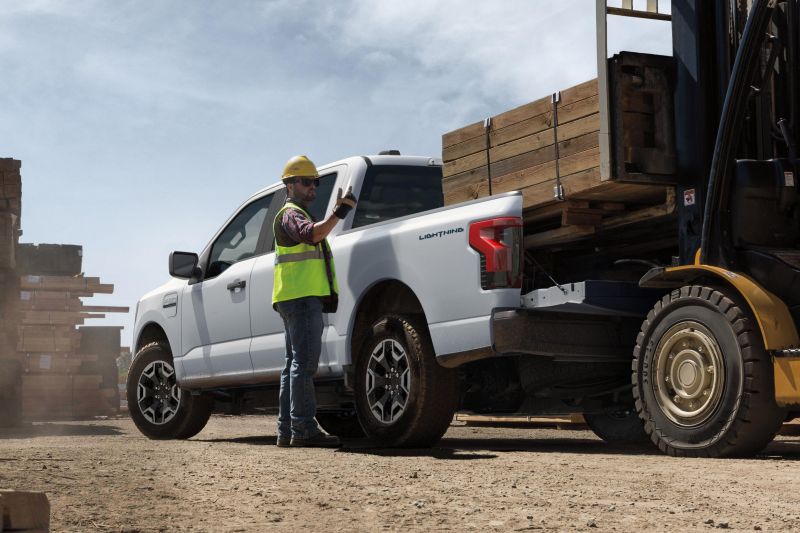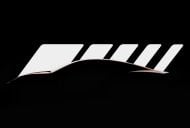Mitsubishi Australia says it supports the proposed New Vehicle Efficiency Standard (NVES), but warns the Albanese Government shouldn’t be naive about the suitability of electrified vehicles for commercial buyers.
Speaking with CarExpert at the launch of the new-generation Triton dual-cab ute, Mitsubishi Motors Australia CEO Shaun Westcott said the new standards need to account for the specific needs and capabilities of vehicles like dual-cab utes when considering electrification.
Mr Westcott believes electric vehicle (EV) technology isn’t there yet for commercial applications nor is it at a price point that services ‘middle Australia’.
“I can’t speak for other OEMs, but for us as an industry, we don’t have a problem with the emissions standards. Let’s get that clear,” Mr Westcott said.
“We do want a standard, we’re not against a standard. What we want is a standard that is practical and achievable against the pace of technology, aligned with what consumers want and what consumers can afford.
“Now at this point, there have been multiple statements from [the government] that it’s going to make no difference on price based on studies done in other countries, but we don’t know what those countries are or what studies were done – because right now when we look at a BEV, on average cost cost a minimum $12,000 to an excess of $20,000 per vehicle more [compared to ICE].
“Does that mean that consumers are going to pay more for these cars? Well, we don’t know. Because at the moment, the answer is yes – you pay more for a BEV, straight upfront. We can talk about cost of ownership, and that includes currently a premium [from ICE] to BEV.
“We have to do a lot of modelling, and obviously we have to reset… as we sit here today, we’re working with our parent company. We’re analysing the impact of all of all of the options – B and C – and obviously we have only seen [the emissions standards] for the first time a few days ago.
“The reality is, wherever it lands, it’s going to have an impact on every OEM in this country, which means all of us would have to recalibrate where we are.
“Some of us have options like PHEVs, others don’t – so there’s going to be different impacts on different players in the industry. Some of those players are right out on the spectrum where they only have BEV, which is great for them.
“Except, those are all passenger vehicles and, VFACTS speak for themselves – the most bought vehicle, and the two top-selling vehicles in Australia are pickups. That is what Australians want.
“The reality is at the moment – the F-150 Lightning is thrown around very loosely – in the same statements they talk about ‘we hope to see these in our constituency’ and ‘we hope middle-class Australia will have these’. Well, the reality is if anyone has bothered to price an F-150, they’re far north of $100,000 – that’s not middle Australia.
“The second aspect of that is that technology – and there are significant studies done out there – when you put a real payload on that thing or when you tow, then suddenly there’s 125km range on that thing. If you’re a tradie doing work out there [in regional Australia] you’re going to travel more than 125km – you’ve got a problem.
“If you’re a tradie with a tray’s worth of tools, or bags of cement or tiles… suddenly those are realities that need to be faced in terms of ‘what do Australians need and what do Australians what?’ And, how are you going to provide them, and do you have the ability to offset?
“The obvious answer for us is that we are in the fortunate position that we do have PHEV, and the reality is our PHEVs are growing extremely rapidly. We started with a very low base as you know with Outlander PHEV – we’ve had 300 per cent growth. We cannot meet the demand, it far exceeds supply.
“We need to model all that. But every car company will need to recalibrate, and it will impact models and lineups and powertrains. It will definitely impact the industry,” Mr Westcott added.
Asked about the all-but-confirmed electrified Triton as well as the confirmed ‘Pickup BEV’ due to launch globally by 2028, Mr Westcott argued manufacturers cannot be expected to bring significant step-changes in drivetrain technology in such a short space of time.
“People who aren’t in the industry don’t understand the nuances, and that is the product development cycle in cars and you’re talking years,” he said.
“We’re not just talking about a new model, you’re talking about a significant step-change in technology, in a technology that is not yet perfected in the sense that it can do what we’re talking about [pickup capability].
“So there are going to be some potential implications that we haven’t yet modelled, and there’s a certain pace at which technology evolves.
“Globally there are billions, not millions, being spent on research on various forms of powertrain whether it be hybrid, PHEV or EV – and not even BEV, we need advanced forms of BEV because as we discussed, in Australia our vehicles aren’t show ponies, these are workhorses.
“These are what keeps the wheels of Australia turning, we need to keep the wheels of Australia turning. Now, those practicalities, realities, I’m not sure if they’re always understood.
“It is the challenge, or our job, to make that known. The problem is, we have a window of about three weeks left to do this.
“It’s definitely going to cause some challenges. Some companies will be smiling because they have pure EV, but the reality is those are all passenger vehicles, and as I said to someone the other day: bags of cement or goats, sheep, cattle don’t fit too well in the back of a Tesla,” Mr Westcott added.
Further, Mitsubishi’s local boss noted that high pricing of EV products relative to their combustion counterparts could mean the NVES may see Australians hold on to older, more polluting vehicles if what the market offers under the NVES doesn’t suit their needs or budgets.
“The perverse outcome – which is a reality – I’m not sure if that’s always well thought through,” Mr Westcott said.
“What happens is, [the NVES] comes at the same time as an economic downturn. People go ‘well firstly a BEV costs on average between $12,000 and $20,000 more – some even more – at the same time that my mortgage has gone through the roof from pre-COVID to now – they’re more than doubled.
“Suddenly my disposable income is much less, so I’m going to hang on to the car for longer.’ So we’d have the older, more polluting vehicle. The reality is the [new Triton] that stands outside is far more fuel efficient, and has less emissions than the previous generation – that could be a step forward, if you bought one.
“But if you go ‘mate, I’m just hanging on to what I got’ well, that’s the perverse outcome.”
The New Vehicle Efficiency Standard will see manufacturers subject to targets for average CO2 emissions per kilometre across their vehicle fleets. Over time this CO2 target will move, forcing companies to provide vehicles with lower or zero emissions to meet stricter targets.
The Australian Government will consult with stakeholders on its preferred model until March 4, 2024, before introducing legislation “as soon as possible”. It’s aiming for the new rules, which will affect new passenger and light commercial vehicles, to come into effect by January 1, 2025.
As with the US’ Corporate Average Fuel Economy (CAFE) standard, which has been in effect since 1978, companies can still sell vehicles with heavier fuel consumption. However, they’ll need to offset these vehicles with more fuel-efficient models.
If companies meet or beat their CO2 target, they’ll receive credits. If they miss it, they can either trade credits with a different supplier, make it up over a set period, or pay a penalty.
The government says under its preferred option, Australians will stand to save around $1000 per vehicle per year in fuel costs, with the average new vehicle purchaser in 2028 claimed to be looking at a saving of $5710 over five years.
Moreover, it says the standard will push carmakers to offer Australians with more choices. It claims new passenger cars in Australia on average use 20 per cent more fuel than in the US.
To read more about the proposed New Vehicle Efficiency Standard, click here
Share your thoughts with us in the comments below!
















